How to Make Homemade Spaetzle (Spatzle)
I’ve recently posted two Hungarian recipes, Beef Goulash, and Paprikas Csirke. Both would be great served with homemade spaetzle.
I asked Chef Ricco, who provided the goulash and Csirke recipes for his favorite spaetzle recipe, and I would like to share it with you.
What Is Spaetzle?
Spaetzle is a type of traditional German pasta or noodle commonly associated with Southern German cuisine, particularly in Swabia, Bavaria, and Alsace. The name “spaetzle” comes from the Swabian dialect, meaning “little sparrows,” possibly referring to the small, irregular shapes of the noodles.
Spaetzle is typically made from a simple batter of eggs, flour, and milk or water. The batter is often seasoned with salt and sometimes nutmeg. The consistency of the batter can vary, ranging from a thin pancake-like batter to a thicker dough-like consistency.
The batter is either pushed through a coarse colander or a specialized spaetzle maker directly into boiling water to prepare spaetzle. The resulting irregularly shaped noodles are then boiled until they float to the surface, indicating that they are cooked. After boiling, spaetzle can be served as a side dish, often accompanied by gravy, butter, and cheese, or used as a base for various sauces and toppings.
Spaetzle is a versatile dish enjoyed in various forms across European cuisines. It is a popular comfort food and a delightful addition to hearty meals.
History
The exact origin of spaetzle is unclear, and its history can be traced back several centuries. The dish is most closely associated with the Swabian region in southern Germany, but variations of similar noodle dishes exist in other European cuisines.
Here are some key points in the history of spaetzle:
- Medieval Origins: Some theories suggest that spaetzle has medieval origins and was created by Swabian peasants. The simple ingredients and preparation method made it an economical and filling dish.
- Regional Variations: While spaetzle is strongly linked to Swabia, variations of similar egg noodles can be found in other regions. The dish is also popular in parts of Austria, Switzerland, Alsace (France), and other German-speaking areas.
- Culinary Evolution: Over time, spaetzle recipes evolved, incorporating different ingredients and preparation methods. Various regions developed their own versions of the dish, resulting in some differences in size, shape, and accompanying sauces.
- Traditional Dish: Spaetzle became a staple in southern German cuisine and is often served as a side dish with meats, stews, or hearty sauces. It is particularly popular during festive occasions and traditional celebrations.
- Culinary Influence: As with many traditional dishes, spaetzle has influenced and been influenced by neighboring cuisines. Similar types of noodles can be found in Central and Eastern European cuisines, each with its own unique variations.
- Modern Popularity: In the modern era, spaetzle has gained popularity beyond its traditional regions. It can be found on menus in German restaurants around the world, and home cooks often enjoy making it from scratch or using pre-packaged versions available in stores.
While the exact origins may be challenging to pinpoint, spaetzle’s long history reflects its role as a beloved and enduring part of German culinary traditions. Its simplicity, versatility, and comforting nature have contributed to its enduring popularity both within Germany and internationally.
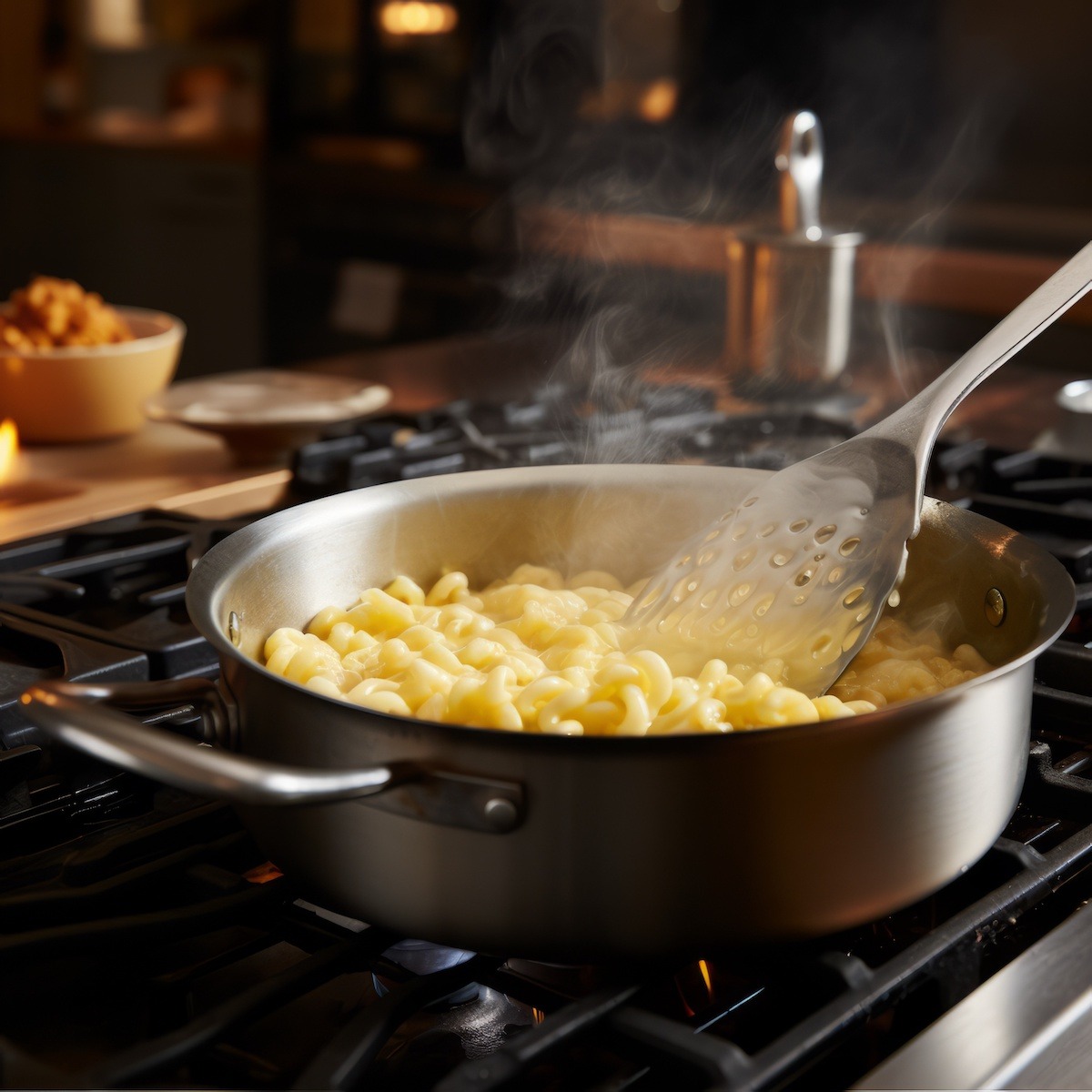
What Tool Do You Use?
You can use various kitchen tools to push the spaetzle dough into the boiling water. The traditional and most common tool is a spaetzle maker, also known as a spaetzle press or spaetzle presser. A spaetzle maker typically has a flat, grater-like surface with a sliding box or a round hopper.
Here’s how you can use a spaetzle maker:
- Prepare the Dough: Mix your spaetzle batter until it reaches the right consistency (thick but still pourable). Let it rest for a short period.
- Boil Water: Bring a large pot of salted water to a boil.
- Position the Spaetzle Maker: Hold the spaetzle maker over the pot of boiling water, ensuring that the holes or slots are facing down.
- Pour the Dough: Pour a portion of the spaetzle batter onto the flat surface of the spaetzle maker.
- Slide the Box or Push the Hopper: Move the sliding box or push the hopper back and forth over the holes, allowing small droplets of dough to fall through into the boiling water.
- Cook the Spaetzle: The spaetzle will float to the surface once cooked. Use a slotted spoon or a spider strainer to remove them from the boiling water.
If you don’t have a spaetzle maker, you can use alternative tools such as:
- Colander or Sieve: Hold a colander or sieve with large holes over the boiling water and press the dough through using a spatula or the back of a spoon.
- Slotted Spoon: Drop small amounts of dough onto a slotted spoon and press it through the holes directly into the boiling water.
Experiment with different tools to find the method that works best for you. The goal is to create small, irregularly shaped noodles that cook quickly and evenly.
Cooking Tips for Making Spaetzle
Making spaetzle at home can be a fun and rewarding culinary experience. Here are some helpful tips to ensure your spaetzle turns out delicious:
Use Fresh Ingredients: Fresh eggs and good-quality flour are crucial for a flavorful spaetzle. Ensure that your eggs are not expired, and your flour is fresh.
Use Winter Wheat Flour: This flour has a higher protein content than spring wheat and is essential for developing gluten, resulting in better texture and structure.
Batter Consistency: Achieving the right batter consistency is key. The batter should be smooth but thick enough to cling to the spaetzle maker or the back of a spoon. You may need to adjust the amount of flour or liquid accordingly.
Let the Batter Rest: Allow the batter to rest for about 15-30 minutes before using it. This gives the flour time to fully absorb the liquid, resulting in a smoother texture.
Boiling Water: Use a large pot of well-salted boiling water to cook the spaetzle. The salt enhances the flavor of the noodles.
Choose the Right Tool: There are various tools you can use to shape the spaetzle, such as a spaetzle maker, colander, or even a slotted spoon. Choose the method that works best for you.
Work in Batches: If making a large quantity of spaetzle, work in batches to avoid overcrowding the pot. Overcrowding can lead to uneven cooking.
Adjust Cooking Time: Once the spaetzle floats to the surface of the boiling water, let it cook for an additional 1-2 minutes. Taste a piece to ensure it is cooked through but still has a pleasant texture.
Drain and Rinse: After cooking, drain the spaetzle and rinse it briefly under cold water. This helps stop the cooking process and prevents the noodles from sticking together.
Add Flavor: Consider adding flavor to your spaetzle batter, such as a pinch of nutmeg or a bit of chopped herbs. This can enhance the overall taste.
Serve with Toppings:
Spaetzle is versatile and can be served with various toppings like butter, grated cheese, sautéed onions, or a flavorful sauce. Experiment with different combinations to find your favorite.
Experiment with Shapes: If using a spaetzle maker, try adjusting the thickness of the batter or experimenting with different hole sizes to create noodles of varying shapes and sizes.
The spaetzle will look glossy; the texture will be between dough and batter.
Remember that practice makes perfect, so don’t be discouraged if your first batch isn’t perfect. With some experience, you’ll become more comfortable with the process and find the perfect balance of ingredients and techniques for your taste.
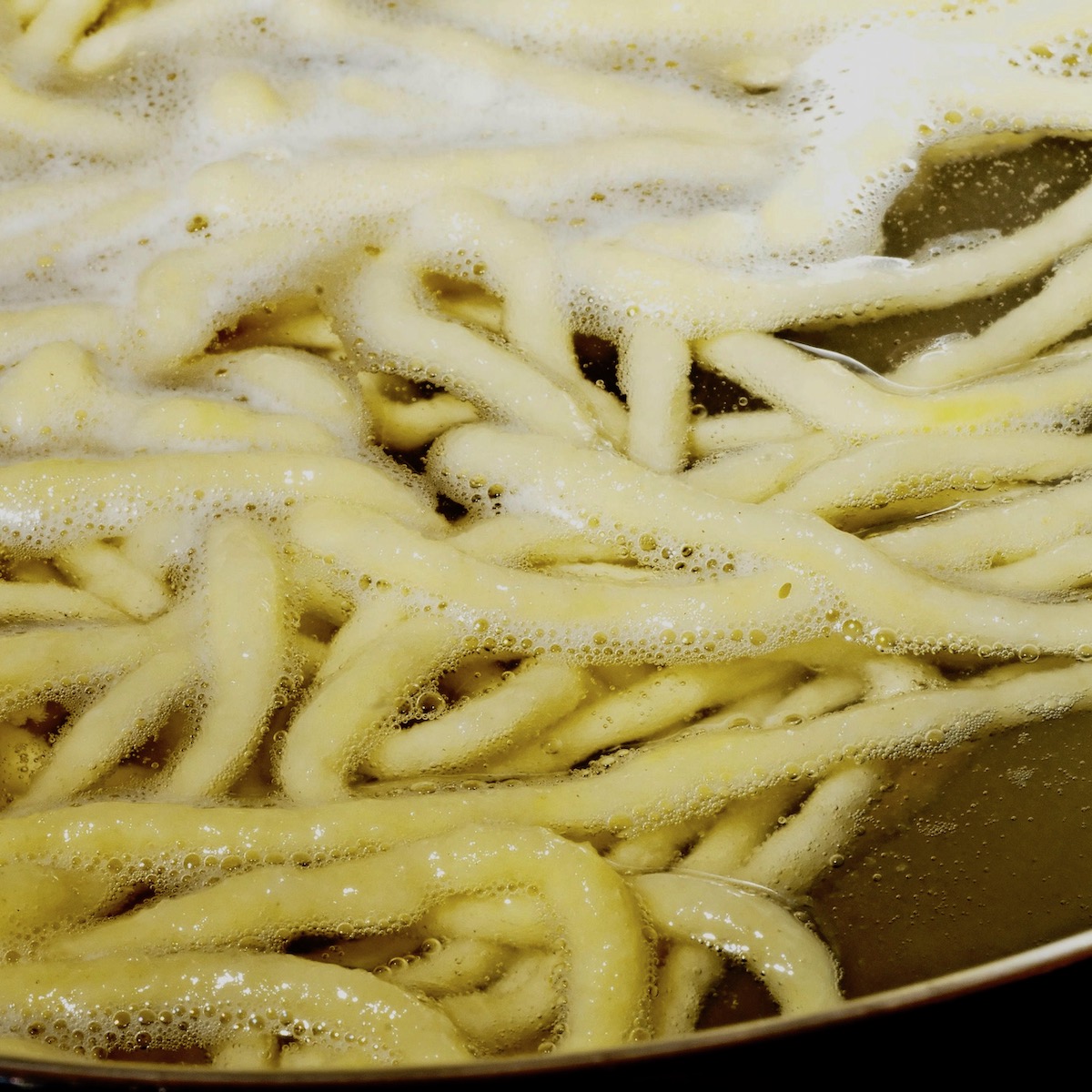
Homemade Spaetzle (Spatzle)
Ingredients
- 18 ounces sifted flour
- 4 large eggs
- 1 tablespoon olive oil
- 4 tablespoons heavy cream
- 1 tablespoon salt
- ½ teaspoon ground pepper
- ½ teaspoon ground nutmeg
Instructions
- Combine all the ingredients as described above but just before your arm falls off.
- When boiling the spaetzle, use a big pot with maximum water and plenty of salt.
- Cook the spaetzle in small batches, when they float to the top of the pot skim them out and put them in a cold-water bath just until they are cooled.
- Then coat them with a little oil so they don't stick together.
- To reheat the cooked spaetzle, just sauté them up in a little butter. If you are going to sever them right away, don't cool them just toss them in a little melted butter.


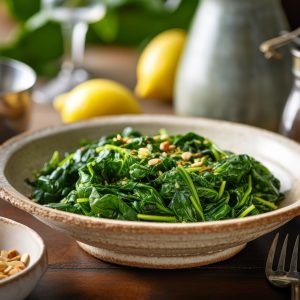
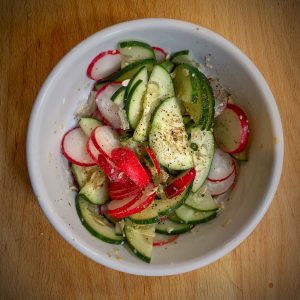
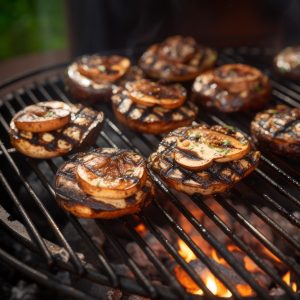
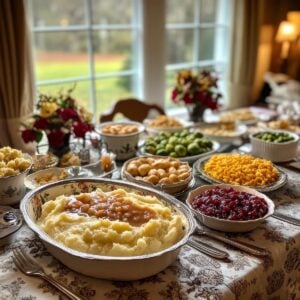
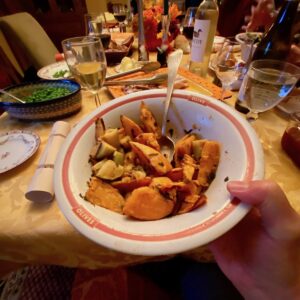
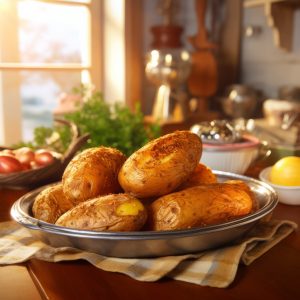




11 Responses
Ate lots of it as a child but never got into making it as did some other childhood foods.Now I have arithitis in hands, up to shoulders and afraid to try it. It is excellent with Beef Burgendy though.
Katherine
I had a Swiss great grandmother. This is a beloved Swiss dish, also. Recently we had our family reunion in New Glarus, Wisconsin (it is a little Switzerland of the midwest) and got to eat lots of spatzle. I’m so happy to find this recipe and give it a try at home!
I used to live in a very German Community in MO, and the favorite delicacy was “liver dumplings” which is actually a Spaetzle with ground liver mixed into the dough. I have a special “spaetzle” tool that drops the dumplings into the boiling broth, while shielding the dough from the boiling water. Comes in handy every Oktoberfest.
We made a 14 cups of flour and 14 egg batch of this dish for the funeral meal of my father. It’s been a family tradition in our home for years. Grandma, born in the German towns of the Ukraine made it. We make the dough thicker, and cut it one by one of the heel of our hands into the boiling water. We fry it after boiling. We call it Knifla.
Is there a traditional Hungarian or Yugoslavian side dish made with tomatoes or stewed tomatoes, onions, rice and tons of paprika and perhaps cayenne?? We had it at “Belgrade Gardens” restaurant in Barberton, OH and it was called Hot Sauce, served with lard fried chicken/frys/their version of slaw. I’ve tried to get the hot sauce recipe for 50 years without luck! If anyone knows, I’ll jump for joy!
The background information you give on the recipes is great. I got to give these a try. Thank you.
Should they be thick or thin? Can they be reheated in the microwave?
In case you haven’t found it yet, Nancy, here is the recipe for Belgrade’s hot sauce, plus the chicken and cole slaw!
http://www.gather.com/viewArticle.jsp?articleId=281474976788318
This restaurant has been closed and tore down for some time. Only Barberton Chicken Houses left are Milich’s Village Inn (actually on the edge of Norton) and Belgrade Gardens & White House downtown. Belgarde & White House are owned by the same owners, DeVoure family. Each year I go to Ohio I now eat at the downtown one, it has a different recipe than Belgrade for the chicken, according to a employee I asked.
my grandmother, grandfather, my father & 2 brothers came here from France – Had made many spaetzle myself – but I don’t have the recipe for liver spaetzle.
I don’t have one either but I’m sure they are out there if that’s what you are looking for. – RG
I did not see the amount of servings the spaetzle recipe makes. do you know?